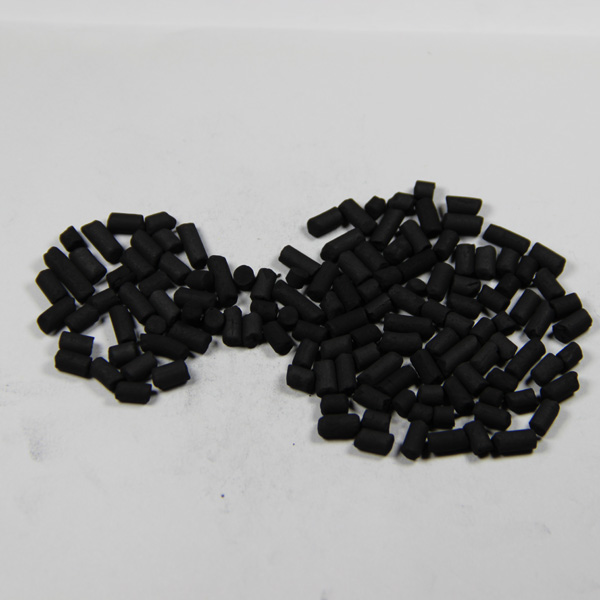What Is the Difference Between Activated Carbon and Charcoal ?
Have You Ever Wondered: What Truly Separates Activated Carbon from Charcoal?
In industrial filtration systems, environmental remediation projects, and even household air purifiers, two materials frequently dominate discussions: activated carbon and charcoal. While both appear similar to the untrained eye, their chemical architectures and functional capabilities diverge dramatically. What fundamental properties make these carbon-based materials perform so differently in critical applications? Let’s dissect their scientific distinctions and operational advantages.
Atomic Blueprints: Structural Divergence at the Molecular Level
Charcoal forms through pyrolysis—thermal decomposition of organic materials like wood at 400°C-700°C under oxygen-limited conditions. This process creates a porous but irregular structure with surface areas averaging 100-300 m²/g. Activated carbon undergoes a secondary activation phase: Steam or chemical agents blast through carbonized material at 800°C-1100°C, etching microscopic channels that expand surface areas to 500-3,000 m²/g. This 10x-30x surface area amplification directly correlates with adsorption capacity differences.
Advanced microscopy reveals charcoal’s macroporous structure (pores >50 nm) versus activated carbon’s optimized microporous network (<2 nm). The latter’s nanoscale architecture provides exponentially more binding sites—one gram contains approximately 5,000 square meters of reactive surface. Such precision enables targeted capture of volatile organic compounds (VOCs), pharmaceutical residues, and heavy metal ions that charcoal cannot effectively retain.
Manufacturing Processes: Thermal Engineering Dictates Performance
Material engineers meticulously control three variables during activation: temperature ramp rates, gas composition, and dwell time. Comparative analysis shows:
| Parameter | Charcoal Production | Activated Carbon Synthesis |
|---|---|---|
| Primary Process | Pyrolysis (single-stage) | Carbonization + Activation (two-stage) |
| Temperature Range | 400°C-700°C | 800°C-1100°C |
| Porosity Control | Natural pore formation | Precisely engineered micropores |
| Surface Area | 100-300 m²/g | 500-3,000 m²/g |
These process differences explain why activated carbon achieves 94%-98% chlorine removal in water treatment versus charcoal’s 40%-60% efficiency. Pharmaceutical manufacturers exclusively use activated carbon for API purification due to its predictable adsorption isotherms and ICH-compliant impurity clearance.
Functional Superiority: Adsorption Mechanisms Compared
Activated carbon’s performance stems from both physical adsorption (Van der Waals forces) and chemisorption (covalent bonding). Its surface oxides selectively attract polar contaminants—a critical advantage in mercury scrubbing from flue gases. Charcoal primarily relies on physisorption, making it suitable only for basic odor control in low-concentration scenarios.
Laboratory tests demonstrate activated carbon’s 6-8x greater iodine adsorption value (900-1,100 mg/g) compared to standard charcoal (150-200 mg/g). This metric directly correlates with effectiveness in gold recovery operations, where activated carbon extracts 99.9% of dissolved gold from cyanide solutions, while charcoal achieves ≤85% recovery.
Application-Specific Performance: Matching Material to Mission
Industrial engineers select materials based on contamination profiles:

Water Purification: Activated carbon removes 97%-99% of pesticides (atrazine, simazine) versus charcoal’s 55%-70% efficiency
Medical Use: Activated carbon’s rapid toxin adsorption (200-400 m²/g within 10 minutes) makes it vital in overdose treatments
Air Filtration: Only activated carbon captures sub-0.3 μm particulates and gaseous pollutants effectively
In environmental remediation, activated carbon’s thermal reactivation capability (5-7 reuse cycles) reduces operational costs by 60%-75% compared to single-use charcoal systems. Municipal water plants report 99.99% Cryptosporidium oocyst removal using activated carbon filters—performance unattainable with charcoal media.
Economic and Operational Considerations
While activated carbon costs 3-5x more per kilogram than charcoal, its superior capacity translates to lower lifecycle costs. For VOC removal in industrial scrubbers, activated carbon achieves 8,000-12,000 bed volumes versus charcoal’s 1,500-2,000. This 5-6x longevity difference makes it cost-effective for continuous operations.
Energy analysts note that activated carbon’s adsorption kinetics enable smaller filtration systems—a 50-ton activated carbon system replaces 300-ton charcoal installations in petrochemical facilities. The reduced footprint and weight (4.7 g/cm³ vs. charcoal’s 2.8 g/cm³ density) significantly impact infrastructure design and logistics.
The Verdict: When Does Each Material Prevail?
Charcoal suffices for non-critical applications: barbecue fuel, simple odor absorption, or artisanal crafts. Activated carbon becomes essential when molecular precision matters—removing ppb-level contaminants, meeting EPA emission standards, or ensuring pharmaceutical purity. Its engineered structure delivers repeatable, quantifiable results that raw charcoal cannot match.
Material scientists continue enhancing activated carbon through dopants and surface modifications. Recent breakthroughs include silver-impregnated variants for antimicrobial filtration and nitrogen-doped versions that capture specific acid gases. These innovations further widen the performance gap, cementing activated carbon’s dominance in advanced industrial applications.
- 11-30
the sulfur content of activate
The sulfur content of activated carbonActivated carbon is a ...
- 05-19
Application of activated carbo
Application of activated carbon to remove sulfur compounds i...
- 10-10
What are the indicators and ch
Raw materials and production process of coconut shell gold a...
- 02-16
Activated carbon to remove odo
Activated carbon to remove odorThe common odors of waste com...

